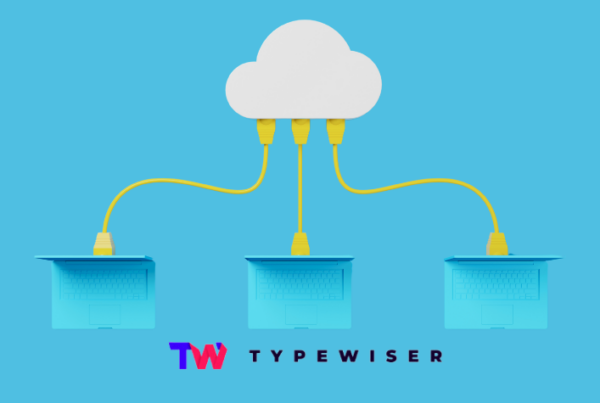Artificial intelligence (AI) promises transformational efficiency and insights for businesses. Yet behind the success stories, there’s a sobering statistic: by some estimates, over 80% of AI projects fail. Many companies enthusiastically launch AI pilots only to see them fizzle out or get abandoned.

In fact, one study found 88% of AI proofs-of-concept never reach production – for every 33 AI pilots, only 4 make it to wide deployment. What happens to the rest? Too often, they stall and eventually teams quietly revert to manual processes after the initial rollout. The excitement fades, support tickets spike with confusion, and employees fall back to familiar ways of working.
Why do some organizations successfully weave AI into their operations, while others retreat to the old ways? The answer goes far beyond algorithms and tech talent. It lies in the less glamorous side of innovation: communication, documentation, and internal knowledge sharing. This blog post dives into those human and organizational factors – the often overlooked reasons some businesses thrive with AI and others fail.
The AI Adoption Paradox: Hype vs. Reality
Businesses big and small feel the pressure to “get into AI.” We’ve hit a point where AI adoption is mandatory, but understanding it is optional. Executives pour budgets into AI projects – yet results are not optional. The paradox is stark: leaders believe AI is critical, but relatively few organizations are truly ready to integrate AI into how they work. Surveys show a huge gap between aspiration and reality. One RAND Corporation report noted more than 80% of AI projects fail, a failure rate twice that of other IT projects. Gartner likewise predicts a large chunk of experimental AI initiatives will be abandoned after proof-of-concept.
What’s going wrong? It turns out the technology is often not the culprit – the organization is. A 2025 analysis summed it up well: “Most AI pilots fail to scale – not because the tech doesn’t work, but because the foundation isn’t ready.” The biggest issues are “misaligned goals, weak data infrastructure, unclear ownership, and lack of cross-functional support,” which keep companies stuck perpetually in pilot mode. In other words, you can have brilliant data scientists and cutting-edge algorithms, but if your business hasn’t done the homework on communication, processes, and data readiness, AI will stall.
To understand this better, let’s peel back some key failure factors that keep coming up across industries. You’ll notice a pattern: these are fundamentally human and process problems rather than technical limitations. The encouraging flip side is that companies who address these areas – communication, documentation, knowledge sharing, data quality, ownership – are the ones turning AI from buzzword to business value.
Communication Breakdowns: The Silent Killer of AI Projects

Every successful AI initiative needs a clear purpose and alignment. And that requires communication – between leadership and engineers, between data teams and business units, and with end-users. Unfortunately, many failed projects suffer from a communication breakdown at the start. If stakeholders misunderstand or miscommunicate what problem needs to be solved using AI, the project is doomed from day one.
Commonly, leadership greenlights an AI project to “do something with AI” without articulating a concrete business need. Meanwhile, technical teams might build something cool but misaligned with what the business actually needs. One industry survey found misalignment with organizational priorities to be a top reason pilots never progress. Lack of clear objectives was explicitly cited as a killer of AI proofs-of-concept. If nobody communicates a north-star goal or measurable KPI for the AI, how will anyone know if it’s working? If you don’t know where you’re going, any road will take you there – and probably into a ditch.
Poor communication also plagues the execution phase. Consider the gap between technical and non-technical teams. In thriving AI adopters, business domain experts and AI developers talk to each other frequently, ensuring the model’s outputs make sense in context. In failing cases, these groups operate in silos. The result: AI solutions that users find irrelevant or confusing.
The Society for Human Resource Management (SHRM) observed that many technical issues blamed on “data” are actually organizational – “data silos, poor documentation, and misuse often result from teams not working together effectively to understand both the domain and the data itself.”. In essence, the data scientists, engineers, and business folks weren’t on the same page. Without a shared understanding, the AI might solve the wrong problem or present insights in a way that front-line employees don’t trust.
Communication from AI teams to leadership matters as well. Leaders may have unrealistic expectations (we’ve all heard execs ask why an AI can’t just magically do XYZ). If technical teams don’t effectively educate leaders on AI’s limitations and probabilistic nature, overhyped goals can lead to disappointment. Conversely, if engineers fail to communicate the infrastructure or data investments needed, executives might underfund critical foundations. In short, AI projects live or die by communication: setting realistic goals, aligning on what success looks like, and keeping all stakeholders in the loop.
Real-world example: One Fortune 500 retailer launched an AI demand forecasting tool built by a specialist team. It technically worked, but regional managers ignored its recommendations – they’d never been included in discussions about how to use it. Lacking context or training, they distrusted the “black box” forecasts and stuck to their manual spreadsheet predictions. The AI was quietly shelved. This kind of story is all too common: fancy pilot, poor communication, zero adoption. Contrast that with companies like Netflix, where an experiment-driven culture means test results and insights are openly shared across the company. Netflix employees at all levels develop intuition about the data because leaders “openly and candidly sharing test results allows everyone…to develop intuition” and learn from each experiment. That kind of communication and knowledge transparency drives engagement with AI initiatives instead of resistance.
The Documentation & Knowledge Sharing Dilemma

When businesses thrive with AI, it’s often because they treat knowledge as a first-class asset. They document processes, create data dictionaries, maintain updated FAQs – they have a culture of turning tacit knowledge into accessible documentation. Why does this matter so much for AI? For one, machine learning models and AI tools often rely on existing data and content. If your data is messy or your content (like policies, manuals, records) is outdated or inconsistent, AI models will reflect those flaws. “Garbage in, garbage out” is the brutal truth.
Moreover, documentation is key for the humans who must use and trust the AI. If an AI system makes a recommendation and no one understands where it came from or how to interpret it, people won’t use it. Consider an AI customer support assistant suggesting responses to agents. If there’s no internal knowledge base explaining the rationale or source of those suggestions, agents will hesitate to trust them. On the other hand, if the suggestion links to a well-maintained internal wiki page or SOP document, the agent gains confidence. Clean, accessible documentation provides context that bridges AI output with human decision-making. It’s like giving your team a map to navigate the AI’s recommendations, instead of leaving them guessing.
Lack of documentation also hurts continuity. AI projects are not “set and forget” – they require ongoing tuning, retraining, and integration with business changes. If the original team leaves and there’s no documentation of how the model was built, what data it needs, who to contact for data issues, etc., the project can wither. Unfortunately, many companies have learned this the hard way: they build a pilot with outside experts or a small innovation team, but when it’s time to hand off to an operational team, nobody has the documented knowledge or ownership to carry it forward.
Knowledge sharing needs to be dynamic as well. Static documents no one reads won’t help. The companies succeeding with AI tend to have vibrant internal knowledge networks – think live documentation, wikis, Slack/Teams channels for Q&A, regular teach-ins or demos. Startups often underestimate how vital this is. In contrast, a company like Amazon has a famed writing culture (requiring six-page narratives for proposals) which forces clarity. Every major initiative is accompanied by detailed documentation that anyone in the organization can reference. That level of clarity and record-keeping pays dividends when implementing complex tech like AI, because teams aren’t operating on unwritten assumptions. The moral: documentation isn’t a bureaucratic chore; it’s the scaffolding that supports AI success.
Data Readiness: The Unsung Hero
We often hear that “data is the new oil.” If that’s true, many companies’ oil is unrefined – full of impurities, locked in barrels no one can open, or scattered in unknown locations. Lack of data readiness is a deal-breaker for AI adoption. In the rush to implement AI, organizations sometimes skip the grunt work of cleaning and organizing data, only to watch the AI project crash and burn.
Data readiness means more than having a lot of data. It means the data is high quality, accessible, integrated, and relevant for the AI task. Companies that thrive with AI typically have strong data governance and engineering practices in place beforehand: well-defined data pipelines, unified data warehouses or lakes, and clarity on data definitions. Those that fail often discover too late that their data is in disarray – perhaps living in siloed legacy systems, full of duplicates or errors, or missing crucial elements. A survey of Chief Data Officers found 68% blamed poor data quality for AI project failures. Similarly, 28% of enterprise data is actually connected on average, meaning 72% remains siloed or unreachable for analysis. That’s a sobering figure: if most of your information is fragmented, any AI you deploy is drawing from a very incomplete well of knowledge.
We can look at an illustrative failure: IBM’s much-publicized Watson for Oncology project. Here was a cutting-edge AI meant to revolutionize cancer treatment recommendations. But at MD Anderson Cancer Center, the project collapsed spectacularly. After 4 years and $62 million spent, MD Anderson pulled the plug without ever deploying Watson on real patients. Why? One big reason: the AI couldn’t tap into the hospital’s data. The medical records system had changed, and Watson “was unable to tap patients’ data, decipher doctors’ notes and patient histories.” The necessary data integration and cleaning just wasn’t there. In effect, the smartest AI in the world was rendered useless by lack of access to the right information. Doctors reverted to their traditional methods, and the grand AI initiative was written off as a failure and quietly abandoned. This story is extreme but instructive: if your data isn’t ready and reliable, your AI will be a very expensive experiment that goes nowhere.
On the other hand, businesses that prepared their data infrastructure often see AI success almost as a byproduct. Walmart, for example, invested for years in integrating its supply chain data, point-of-sale data, and vendor data. So when Walmart applied AI for predictive analytics in inventory and logistics, the models had a goldmine of consistent data to draw from. The results were powerful: fewer stockouts, optimized routing, and millions in savings. The takeaway is clear – getting your data house in order is perhaps the unglamorous, yet most critical, step in AI adoption. It’s the part that doesn’t make headlines, but it decides whether your AI pilot thrives or faceplants.
Ownership and Collaboration: Who Drives the AI Bus?
Even when communication is flowing and data is ready, there’s another organizational pitfall: unclear ownership. AI projects that thrive usually have a clearly designated owner or team responsible for driving the project to value. Those that flounder often suffer from the “everybody and nobody in charge” syndrome. For instance, a company might assume that the IT department will handle the AI model, the business unit will handle implementation, and the data team will handle data prep – but without a single throat to choke (or champion to credit), coordination falters. If no one is accountable for the outcome, then critical tasks fall through the cracks: who ensures the model is updated with new data? Who trains the end-users? Who measures ROI and iterates on the solution? Ambiguity here is deadly.
Cross-functional collaboration ties into ownership as well. AI projects, by nature, span tech and business domains. If departments guard their turf or “toss the project over the wall” to another, the effort disintegrates. Conversely, when AI efforts include all stakeholders from day one – IT, business, compliance, end-users – the chances of success skyrocket. A 2025 Microsoft AI adoption study found that 100% of organizations at the advanced stage of AI adoption had leadership that clearly communicated AI’s importance and fostered collaboration. In short, everyone knew who was driving the AI initiative and why, which aligns the entire organization.
Conclusion: Knowledge and Clarity Fuel AI Success
 At first glance, AI adoption might seem all about cutting-edge algorithms, fancy tools, and hiring PhD-level talent. But the tales of triumph and failure we’ve explored tell a different story. The root causes of sustainable AI success (or failure) are often mundane and very human: how well teams communicate, how diligently knowledge is documented and shared, how prepared and accessible the data is, and how clearly responsibilities are defined.
At first glance, AI adoption might seem all about cutting-edge algorithms, fancy tools, and hiring PhD-level talent. But the tales of triumph and failure we’ve explored tell a different story. The root causes of sustainable AI success (or failure) are often mundane and very human: how well teams communicate, how diligently knowledge is documented and shared, how prepared and accessible the data is, and how clearly responsibilities are defined.
When a business thrives with AI, it usually has mature practices in these areas. Communication is frequent and jargon-free, bridging the gap between techies and business folks. Documentation is treated as a living asset – from data catalogs to process docs – so that both people and AI systems can tap the organization’s knowledge. There is a culture of learning, where lessons (and even failures) from AI experiments are shared widely, not kept in silos. Data isn’t an afterthought, it’s proactively cleaned and integrated, allowing AI to actually perform as advertised. And importantly, everyone knows who owns the AI initiative and how it aligns to strategy.
On the flip side, when AI projects fail and the company sheepishly goes back to manual processes, it’s often due to a failure in one of these fundamentals. Maybe the project had plenty of technical talent, but no one talked to the end-users (poor communication) or the training data was scattered across five legacy systems (poor data readiness). Or the AI worked fine, but employees didn’t trust it because they had no context for its outputs (poor knowledge sharing and documentation). Or perhaps it never moved beyond pilot because once the demo was done, no department wanted to take ownership of implementation (unclear ownership). These “people and process” issues can quietly undercut even the most promising technology.
The encouraging takeaway for startup founders and researchers is this: the key to AI success is in your hands, not just in the hands of some genius coder or expensive platform. Promoting a culture of clear communication and strong documentation is an investment that will pay off in any tech adoption, doubly so for AI projetcs. Think of it like preparing the soil before planting a garden – you need to pull the weeds of siloed information, enrich the ground with documented knowledge, and ensure everyone knows what seeds we’re planting and who’s watering them. With such a groundwork, AI initiatives have a truly real chance to grow and bear fruit.
Corporate AI adoption is as much a management and culture challenge as it is a technical one. Businesses that recognize this – that treat internal communication, documentation, and knowledge structure as strategic priorities – are the ones turning AI projects from a buzzword into tangible impact. They thrive because they’ve built the internal muscle to support advanced technology. Those that neglect these fundamentals may get a flashy pilot going, but they’ll likely see it sputter out and find themselves back at square one. The message is clear: If you want AI to succeed in the long run, invest as much in your organization’s knowledge infrastructure as you do in the technology itself. AI can be a game-changer, but only if the humans behind it are aligned, informed, and empowered. And that comes from a foundation of great communication and great documentation – the unsung heroes of long-term AI success.



